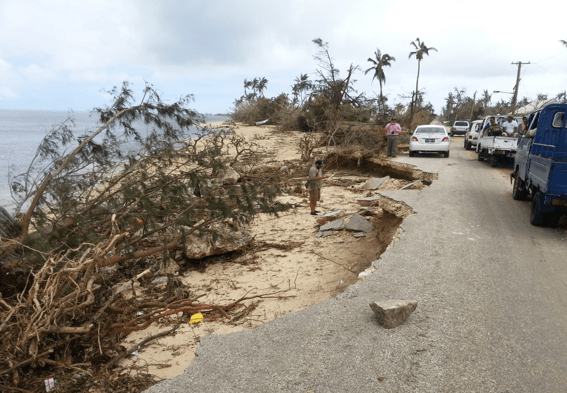WEEK#8 Mass Wasting Events in Tonga
Week #8 Mass Wasting Events in Tonga
Mass wasting is the movement of rock and soil down slope under the influence of gravity. Rock falls, slumps, and debris flows are all examples of mass wasting. Often lubricated by rainfall or agitated by seismic activity, these events may occur very rapidly and move as a flow. Landslide triggers may include:
The runout of a mass wasting event depends on the volume of material, water content, and slope steepness.
Tonga landslide susceptibility is classified as medium according to the information that is currently available. This means that this area has rainfall patterns, terrain slope, geology, soil, land cover and (potentially) earthquakes that make localized landslides an infrequent hazard phenomenon. Based on this information, planning decisions such as project siting, project design, and construction methods, should take into account the potential for landslides. Further detailed information should be obtained to better understand the level of landslide susceptibility in your project area.
Climate change impact: Climate change is likely to alter slope and bedrock stability through changes in precipitation and/or temperature. It is difficult to determine future locations and timing of large rock avalanches, as these depend on local geological conditions and other non-climatic factors.
Sources:

Comments
Post a Comment